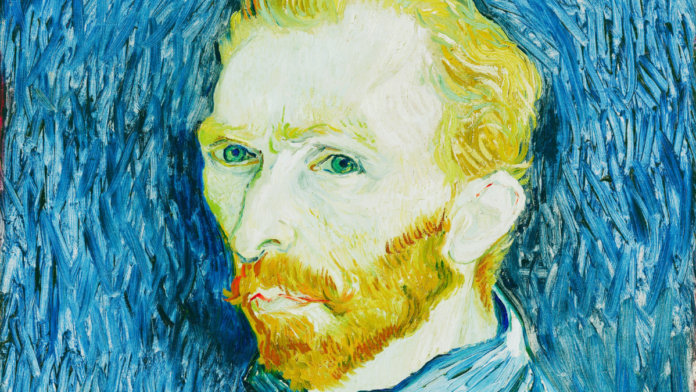Vincent van Gogh was a fantastic artist born on March 30, 1853, in Zundert, Netherlands, is celebrated as one of the greatest artists ever. His striking use of color, expressive brushwork, and contoured forms have left an indelible mark on the art world, influencing modern movements such as Expressionism. Despite his profound impact, van Gogh’s life was marked by personal struggles and tragic events, contributing to his mythologized image as the quintessential tortured artist. Today, You are in for a treat! HTC News will give you an insight into the life of one of the greatest art figures in the world.

(more HTC News General Topics)
The Life of Vincent and His Artistic Beginnings
Vincent van Gogh’s Formative Years
Van Gogh was the eldest of six children in a Protestant pastor’s family. Vincent’s early years were spent in the Brabant region of the southern Netherlands, where he developed a deep appreciation for nature. At 16, he began an apprenticeship with Goupil and Co., an art dealership, which ignited his interest in art. However, his career in art dealing was short-lived, and his life took a turn after a failed romance in London, leading him to various jobs, including teaching and lay preaching.
Discovering His True Calling
In 1880, van Gogh turned to art after a period of despair and a failed attempt to join the ministry. This decision began his mission to bring consolation to humanity through his work. He learned drawing at the Brussels Academy and later worked with Anton Mauve in The Hague, gradually refining his technique and exploring the use of oil paints.
Prime Years of Vincent
Developing His Style
Van Gogh’s artistic career, though brief, was incredibly productive. During his time in Nuenen, he painted scenes of peasant life inspired by the social realism of artists like Jean-François Millet. His move to Antwerp in 1885 exposed him to the works of Rubens and Japanese prints, significantly influencing his style. His relocation to Paris in 1886 further broadened his artistic horizons as he interacted with Impressionist painters, leading to a brighter palette and more dynamic brushwork.
Arles and the Studio of the South
In 1888, seeking brighter skies and vivid colors, van Gogh moved to Arles, hoping to establish an artist community. Although his collaboration with Paul Gauguin ended disastrously, this period was marked by the creation of some of his most famous works, including “The Bedroom” and “Starry Night.” However, his mental health deteriorated, leading to a series of hospitalizations.
His Lasting Impact During His Final Years
Struggles and Triumphs
Van Gogh’s final years were spent in the asylum at Saint-Rémy and later in Auvers-sur-Oise under the care of Dr. Paul Gachet. Despite his ongoing mental health struggles, he continued to produce vibrant and emotionally charged paintings. His works from this period reflect a deep connection to nature and a profound sense of movement and life.
Van Gogh’s Death and Legacy
In July 1890, plagued by mental illness and feelings of failure, van Gogh shot himself. He died two days later, leaving behind a legacy that would only be fully recognized posthumously. His brother Theo, who had supported him both emotionally and financially, passed away six months later.
A True Artist
Vincent van Gogh’s life was a profound artistic exploration and journey of personal turmoil. His innovative techniques and emotional depth influenced countless artists and reshaped the trajectory of modern art. Despite selling only one painting during his existence, van Gogh’s works are now celebrated worldwide, fetching record prices at auctions and drawing large crowds to exhibitions. His story as a struggling, misunderstood genius has cemented his status as an extraordinary painter and an enduring cultural icon.
Frequently Asked Questions about Vincent Van Gogh
1. What are some of Vincent van Gogh’s most famous paintings?
Some of Vincent van Gogh’s most renowned works include “Starry Night,” “The Bedroom,” “Sunflowers,” “Irises,” and “The Potato Eaters.” These paintings are celebrated for their bold colors, emotional depth, and unique brushwork.
2. How did Vincent van Gogh influence modern art?
Vincent van Gogh’s vibrant color, expressive brushwork, and emotional intensity significantly influenced modern art movements, particularly Expressionism. Artists such as the Fauves, Chaim Soutine, and the German Expressionists drew inspiration from his innovative techniques and visionary approach to painting.
3. What were the significant challenges Vincent van Gogh faced in his life?
Van Gogh faced numerous challenges, including mental health struggles, financial difficulties, and social isolation. He experienced episodes of severe mental distress, which led to hospitalizations and, ultimately, his tragic death by suicide. Despite these hardships, he remained dedicated to his art and produced an astounding body of work.
4. How did Vincent van Gogh’s relationship with his brother Theo impact his life and work?
Theo van Gogh has a crucial role in Vincent’s life, providing financial support, emotional encouragement, and a deep bond of brotherhood. Their extensive correspondence offers valuable insights into Vincent’s thoughts, struggles, and artistic development. Theo’s unwavering belief in Vincent’s talent helped sustain him during his most challenging times.
5. Why is Vincent van Gogh often called a “tortured artist”?
Van Gogh is often referred to as a “tortured artist” due to the profound personal struggles he endured throughout his life, including mental illness, social isolation, and unfulfilled relationships. These struggles and his passionate and intense approach to art have contributed to his mythologized image as a tragic genius.
6. How did Vincent van Gogh’s art become famous after his death?
After van Gogh’s death, his work began to gain recognition through exhibitions and the efforts of art dealers and collectors. His posthumous fame grew significantly in the early 20th century, and he became celebrated as one of the greatest painters in history. His life story’s dramatic elements and his work’s emotional power continue to captivate audiences worldwide.
read more: What is the BPO industry and Why is it Thriving in the Philippines?




















